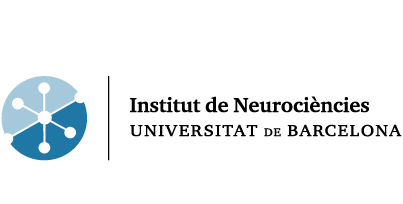JOAN GUÀRDIA-OLMOS
Position: Full Professor
Research team
Maribel Pero Cebollero
Associate Professor
mpero (at) ub.edu
Nuria Mancho Fora
Early stage researcher
nuria.mancho (at) ub.edu
Laia Farras Permanyer
Early stage researcher
laiafarras(a)ub.edu
amatamoros (at) ub.edu
Contact details
Prof. Joan Guàrdia-Olmos
Department of Social Psychology and Quantitative Psychology
Faculty of Psychology, Passeig Vall d’Hebron 171
08035 Barcelona (Spain)
+34 933125090
jguardia (at) ub.edu
Research Interests
The study of brain connectivity is one of the main challenges when studying the active brain. Brain connectivity is operationally defined as the estimation of the relation between brain areas (Regions of interest, ROIs, or Volumes of interest, VOIs); these relations are established when a specific cognitive task is being solved or when resting. In order to estimate the connectivity different brain signals can be used, each of which has different neurofucntional properties. One of signals showing great ability to represent the active brain is the BOLD signal, obtained when using functional magnetic resonance imaging (fMRI). What is registered is the modification of the magnetic field that takes place due to the increment of the presence of oxygen is certain brain areas when these are activated during a cognitive task. When the brain is resting, the signal shows the basal state used as a reference.
In order to estimate the connectivity networks, the value of the BOLD signal is isolated, throughout the recording period, in these voxels that anatomically or statistically present significant activation as compared to resting. In each grouping of voxels, a value for this ROI is estimated via dimensionality reduction techniques and the connectivity networks are tentatively established. Currently, there are two main models for estimation of connectivity: one based on structural equations models (SEM) one estimating the effective connectivity via dynamic causal models (DCM). Both models reflect different perspectives on the neurobiological bases of the network, but there are also some similarities in their mathematical and statistical properties.
Current Research Lines
- Multivariate Statistical Analysis
- Quantitative Neuroscience
- Functional and Effective Connectivity
- Structural Equation Models
- Advanced Statistical Data Analysis and Visualization
Technologies / methods
- Generation of statistical advanced models applied to the big data structures and brain signal.
- Psychometric technology.
- Advanced Multivariate Analysis.
Highlighted publications
· Gallardo, G., González, A., Gudayol, E. & Guardia, J. (2015). Type 1 Diabetes modifies brain activation in young patients while performing visuospatial working memory tasks. Journal of Diabetes Research, Article ID 703512.
· Gudayol, E.; Peró, M.; González, A. & Guàrdia, J. (2015). Changes in brain connectivity related to the treatment of depression measured through fMRI: A systematic review. Frontiers in Human Neuroscience, 9; 582.
· Carbo, M.; Guàrdia, J. & Giné, C. (2015). A structural equation model to study the relationship among physical activity-related factors and quality of life. International Journal of Clinical and Health Psychology.
· Guàrdia, J., Pero, M., Zarabozo, D., González, A. & Gudayol, E. (2015). Effective connectivity of visual word recognition and homophone orthographic errors. Frontiers in Psychology, 6, Article 640.
· Farràs, L., Guàrdia, J. & Peró, M. (2015). Mild cognitive impairment and fMRI studies of brain functional connectivity: the state of the art. Frontiers in Psychology, 6.



